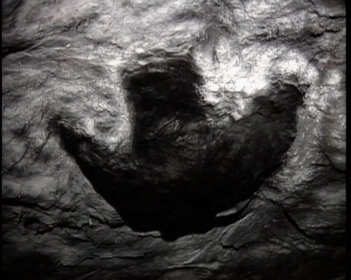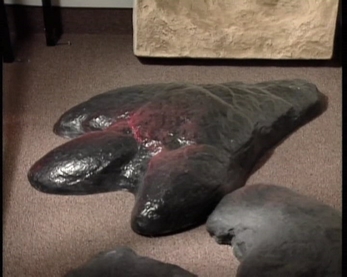 |
 |
 |
 |
 |
 |
 |
 |
|
 |
 |
 |
25 Undamaged layer boundaries
|
| Menu | back |
The layer boundaries for geological formations (the transition from one sedimentary layer to the next), which are often attributed an age of thousands or more years, generally show no or little surface erosion, bioturbation or formation of soil. The proposition that the surface of an Earths stratum escaped the effects of the weather for millennia, before being covered by another layer, is inconceivable. Therefore the majority of sedimentary strata must have come into existence within days, years and decades.
The vast majority of sediment layers are either obliquely layered, graded and/or contain fossils. In the formation of the sediment layers themselves, an interpretation of millions of years can never be given. It must be clarified what period of time could have elapsed between the coming into existence of one layer and the next.
The following characteristics show a rapid process of layering, they are characteristic of most geological layer boundaries:
|
| a) |
Insufficiently eroded surfaces (1): if a surface is exposed to the elements for a long period of time, it becomes eroded. Water and wind, by the action of erosion, form uneven and indented surfaces. The longer the weather has an effect, the more distinct the surface irregularities and indentations become. After only a few decades, as a rule significant alterations to the surface can be observed. How have the layer boundaries in geological formations, which allegedly boast an age of tens of thousands of years, remained largely undamaged?
|
| b) |
Little or no bioturbation (2): On a seabed or lake bed, after a certain time plants and animals start to establish themselves and leave traces behind: root formation by plants, signs of digging by burrowing molluscs and other digging creatures, wormholes, etc. If such a surface is covered with sediment, the traces remain. If such traces are missing or sparse, then one has to assume that these layers were deposited in rapid succession.
|
| c) |
Soil formation: complicated chemical processes lead, in the course of a few hundred years, to the formation of soil. Soil formation is clearly visible on the immediate surface, while the characteristic traits of the formation of soil are scarcely seen in deeper geological layers. As iron oxide is found in all fertile soils, at least one black or brown colouration must be identifiable. Most of the deeper lying layers had to have been laid down so quickly that there was too little time for the formation of humus to take place.
|
| d) |
Animals footprints: One mainly finds footprints in geological layers of volcanic ash. Volcanic ash hardens very quickly. If it becomes moist and is dried out by the sun, the surface solidifies with the footprints. When covered with new material, footprints are preserved in clay, sand and other soft surfaces. Even if very few layer boundaries contain footprints, one can still assume that at least the layers containing the footprints came into existence very rapidly.
| |
|
 |
|
 |
| Fossil Dinosaur footprint |
|
Fossil footprint Dinosaur |
These 26 | Menu |
back
|
References:
|
| (1) |
Joachim Scheven, Karbonstudien, Hänssler-Verlag, 1986, page 71. |
| (2) |
Eugen Seibold und Wolfgang H. Berger, The sea floor, Springer Berlin, 1996. | |
| |
| |
| (Images) Screenshots from the video "The Young Age Of The Earth" by Dr. Robert Gentry. See http://www.0095.info/en/index_links.html |
Comment this Site!
|
 |
 |
 |
 |
|

